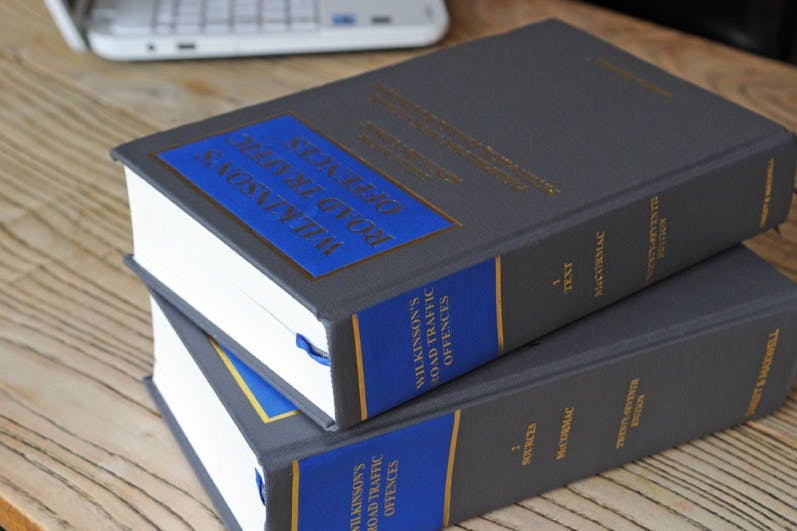Recovery Operators
Updated: Mar 18, 2021
Do I need an Operator's Licence?
Carolyn Evans | Principal Solicitor | C E Transport Law
Many recovery operators find themselves in the difficult predicament of working partly within scope of operator licencing and partly out of scope.
Deciding which elements of the business fall into which category and whether an operator’s licence is required is a bit of a minefield.
I have summarised the legal position to date, although it is well worth taking advice on whether YOUR operation is exempt or not.
The Legal Framework
Schedule 3 for the Goods Vehicles Regulations 1995, lists the categories of goods vehicles that are exempt from operator licensing. Schedule 3 paragraph 27 confirms that a “recovery vehicle” is exempt from the requirement for an Operator’s Licence to be held.
A “recovery vehicle” is defined in Part 5 of Schedule 1 to the Vehicle and Excise and Registration Act 1994 as “a vehicle which is constructed or permanently adapted primarily for any one of the purposes of lifting, towing and transporting a disabled vehicle”.
The difficulty has been in determining what is meant by disabled?
There are essentially two considerations for determining whether a vehicle is a recovery vehicle (and so exempt) as follows:
1. What type of vehicle being used
2. The purpose to which the vehicle is being put.
i) Type
According to the Vehicle Excise and Registration Act 1994, a recovery vehicle is “a vehicle which is constructed or permanently adapted primarily for any one or more of the purposes of lifting, towing and transporting a disabled vehicle”.
In physical construction this means that a recovery vehicle could be anything from a heavy wrecker, to a flatbed with ramps and winch, to a transit van and tow dolly. Other Acts and Regulations mention recovery vehicles, but they all refer back to the only legal definition contained in the aforementioned Act.
ii) Purpose
In addition to its physical construction, a recovery vehicle must also be used for one of the following purposes:
1) Recovery of a disabled vehicle
2) The removal of a disabled vehicle from the place where it became disabled to premises at which it is to be repaired or scrapped.
3) The removal of a disabled vehicle from premises to which it was taken for repair to other premises at which it is to be repaired or scrapped.
4) Carrying fuel and other liquids required for its propulsion, and tools and other articles required for the operation of, or in connection with, apparatus designed to lift, tow, or transport a disabled vehicle.
5) At the request of a constable or a local authority empowered by, or under statute, to remove a vehicle from a road, removing such a vehicle, which need not be a disabled vehicle, to a place nominated by the constable or local authority.
It is clear that the ‘spirit of the legislation’ is to allow for companies to collect and move immobile vehicles without an Operator’s licence. In my view a 2019 decision of the Administrative Court (looked at later in this blog) extended this to vehicles which are not safe to drive.
The DVSA Guidance is a good starting point and says this:
“A disabled vehicle is one which cannot reasonably be driven due to mechanical failure or dangerous components, or even incapable of use in the reasoned opinion of the recovery operator. It is not sufficient to deliberately disable a vehicle (eg disconnect the battery) to call it disabled for the purposes of defining a recovery vehicle. However, recovery of a disabled vehicle applies to roadside scenarios or vehicles situated within private premises”.
If you collect disabled vehicles from customer premises (that have not ‘broken down’ there), you are going to encounter difficulty in establishing that this falls within one of the stated purposes.
Similarly, the collection of vehicles that are not commercially repairable is likely to fall within the licensing regime and is not an exempt activity. The collection of vehicles from car auctions or scrap yards will not be ‘recovery’ if the vehicle is ‘safe to drive’. If a vehicle is repaired and then returned to the customer, that return journey is not classed as recovery.
If you collect vehicles on behalf of an insurance company, in circumstances where you are not ‘roadside recovery’ make sure that the activity comes within one of the stated purposes, or you risk prosecution.
As a rule of thumb only vehicles which cannot be safely driven are likely to be regarded as ‘disabled’.
In the court, the definition of recovery has been repeatedly narrowly defined. The default position is if you are using the vehicle for hire or reward or in connection with your trade or business, you require an Operator’s Licence. It is for you to establish to the Courts satisfaction that the exemption applies.

The case of DVSA & Classic Restoration & Services Ltd was determined at the Administrative Court on the 16th January 2019 EWHC 718 (Admin).
The case was an appeal from the Guildford Magistrates Court by Mr Allan on behalf of the company. In the lower court the company was charged with the offence of using on a road a goods vehicle for hire or reward, without an operator’s licence, contrary to Section 2(5) of the Goods Vehicle (Licensing of Operators) Act 1995. This is the section which applies, when the DVSA believe that the exemption does not apply.
The Magistrates, found the defendant not guilty of the offence, on the basis that the vehicle was exempt from the requirement to hold an operator’s licence, as it was a recovery vehicle.
This case concerned the appeal by the DVSA.
The basic facts are as follows.
“At approximately 10.40am on 19 July 2017 at the A34 Marcham Interchange, a goods vehicle
– a MAN two axle rigid vehicle with a gross weight of 7,500kg, operated by the defendant/respondent – was subject to a roadside check. The vehicle was laden with an 8-litre Bentley chassis. It was being taken from Chichester to Telford and was being driven by Mr William Allan, a director of the defendant company. At the roadside and under caution, Mr Allan confirmed that the goods vehicle was being operated on behalf of the defendant company, and that no operator’s licence was held”.
The appeal focused on the definitions associated with ‘recovery’ of a ‘disabled vehicle’ and the ‘removal’ of a ‘disabled vehicle’ from the place where it became disabled to premises at which it is to be repaired or scrapped.
The case began with a general exploration of what amounts to a ‘disabled vehicle’.
The Judge (The Honorable Mrs Justice Jefford DBE) set out that the definition of a disabled vehicle is not limited to one that has broken down in the common way in which that expression is used. The Judge gave an example of a car involved in a road traffic accident which may be damaged and dented, (its lights and mirrors damaged, and not safe to drive), although it may still be capable of being mechanically propelled and, thus, is not broken-down. She expressed the view that this vehicle, by implication would meet the definition of ‘disabled’.
It was generally accepted, that the HGV was a recovery vehicle by virtue of its physical construction and so satisfied the first test.
The case then centred upon the question of whether:
· The carrying of the chassis of a vehicle (in this case a Bentley)
· After the fuel tank and frame were both removed,
· To a place of repair
satisfied the criteria.
In other words- Did this meet the definition of the ‘removal of a disabled vehicle from the place where it became disabled to premises at which it is to be repaired or scrapped’?
It was relevant to this case that in 2015, the Bentley was a working vehicle. While it was being worked on, (with that work principally relating to its interior), a problem was identified that the Magistrates found rendered it disabled – namely a leaking fuel tank.
The Honourable Mrs Jefford found that the carrying of the vehicle chassis to a place of repair was recovery within the purposes of the Act and the appeal by the DVSA failed.
The Judge differentiated this case from other ‘restoration cases’ by clarifying that a vehicle which has been rendered disabled, as part of works on it, has not become disabled. It has ‘been’ disabled or been ‘made’ disabled. A vehicle which is in the process of restoration may well be being transported for restoration and not repair. Those cases would not be able to avail themselves of the exemption.
The winning factor in this case was that although the Bentley was working when purchased in 2015 (and being restored), a genuine a defect became apparent which rendered it disabled and so the user was able to avail himself of the exemption.
The case explores a lot of the complex issues which tend to arise in such cases, and I commend it to anyone who operates within this field.
My advice is to define recovery narrowly, in order to avoid later stop checks and risk the prospect of any later Goods Vehicle Licence application succeeding.
Restricted or Standard National?
If you have decided that elements of your operation DO fall within operator licencing, the next question is which type of licence to apply for.
If you wish to collect vehicles belonging to other companies or businesses, (to include other companies owned by you), then you would need a Standard National Operator’s Licence. It is only if you are collecting your own goods, that you would be able to operate under a Restricted Licence.
NB – The rules in relation to drivers’ hours compliance for recovery operators has not been explored in this blog and operates within a different legal framework.
Sources: https://www.avrouk.com/images/ul/guide-for-recovery-operations.pdf
